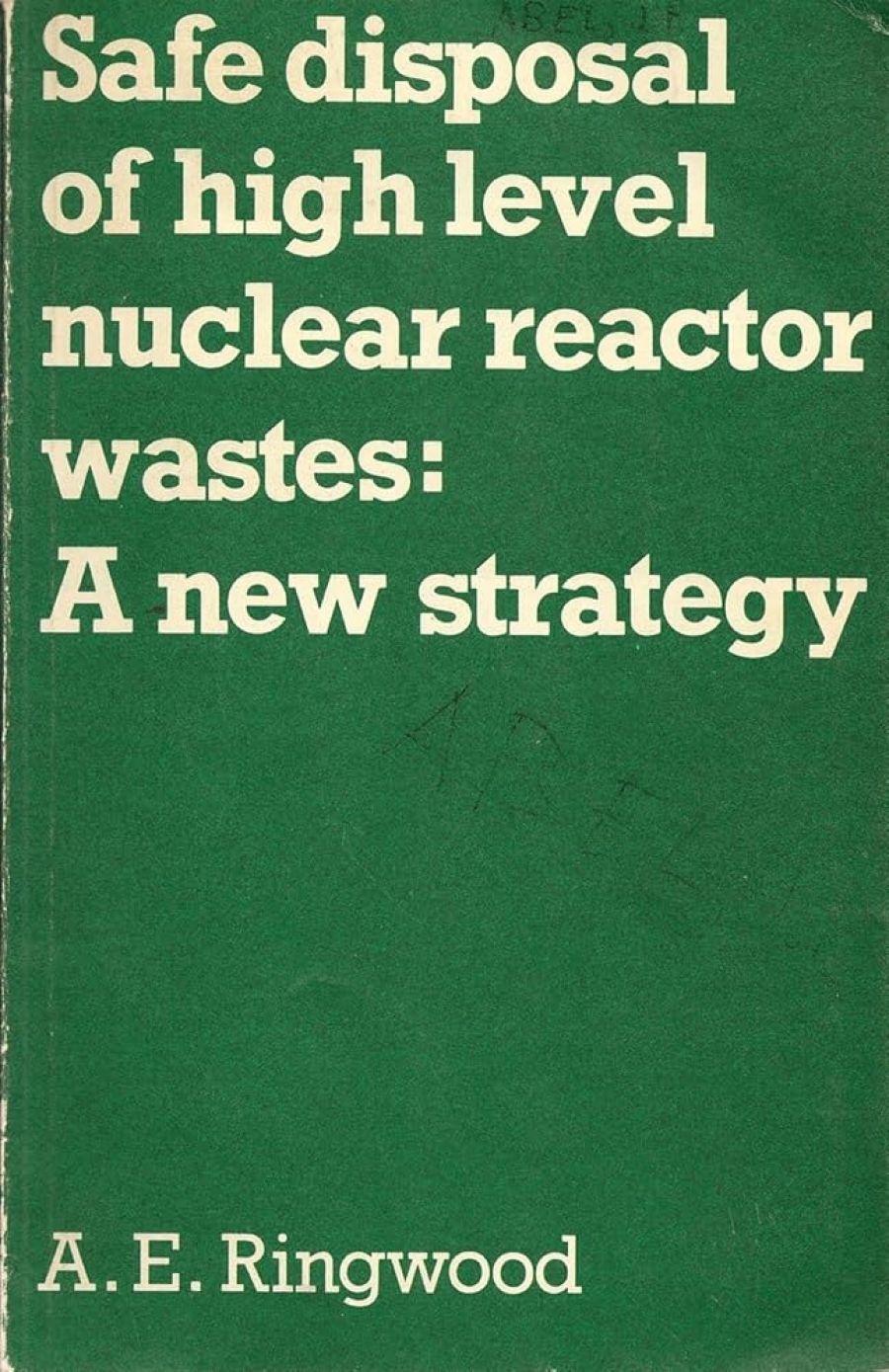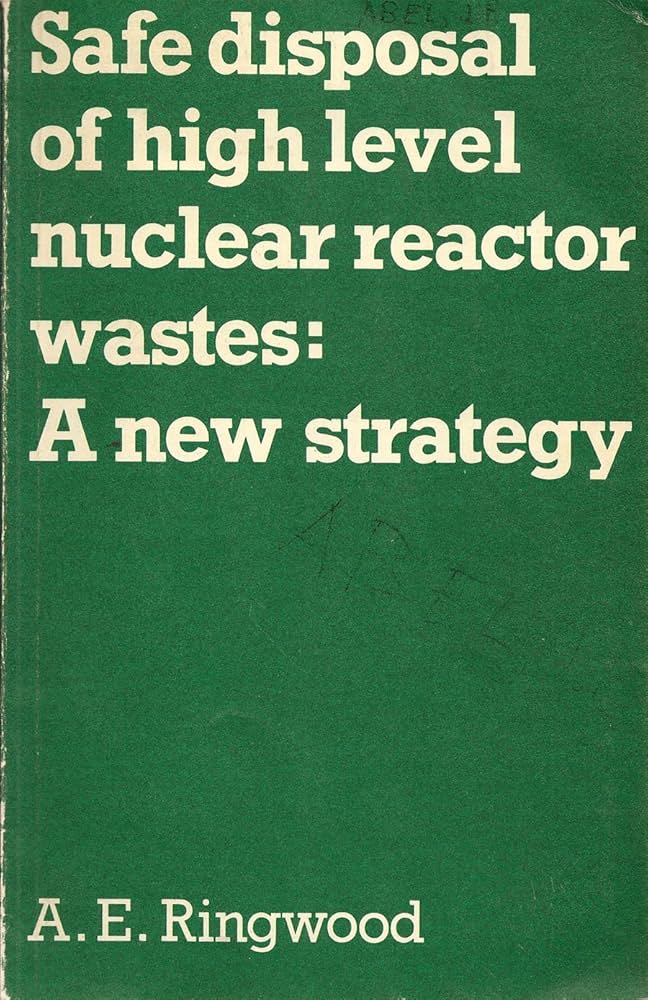
- Free Article: No
- Review Article: Yes
- Article Title: Burying nuclear problems
- Online Only: No
- Custom Highlight Text:
The first thing the general reader will need to know about this book is that it is not for the general reader. It too often and too closely approaches the clipped and densely allusive style of the average scientific paper, designed for initiates only and a small band of them at that. It uses too many words from the jargon of physics, chemistry and even geology with insufficient or no explanation. Even if Scientific American and New Scientist are your cup of tea, this book could exceed your powers of digestion.
- Book 1 Title: Safe Disposal of High Level Nuclear Wastes
- Book 1 Subtitle: A new strategy
- Book 1 Biblio: ANU Press vii + 63pp
- Book 1 Cover Small (400 x 600):

- Book 1 Cover (800 x 1200):

This understood, let us pass to the content.
It is now widely realised that the ‘ashes’ from a nuclear fire – the heat generated in a nuclear power station – are considerably more difficult to dispose of than those from coal; they will need to be stored safely away from the air we breathe and the water we drink for something like a million years, before the deadly radiation they emit has dropped to a safe level.
We have been frequently assured, however, and by the highest authorities (including Mr Fraser), that the technology exists to ensure this needed isolation. The dangerous waste elements will be incorporated in a glassy matrix, sealed in metal canisters and buried far below the surface of the earth, where they will resist time, water, and earth upheavals for the required period.
The most striking part of Ringwood’s book is chapter three, where he effectively demolishes this whole glassification scheme as an unsafe·and dubious delusion. This is the part which deserves the most publicity but has received the least; perhaps too many authoritative and reassuring figures would have needed to explain why they misled the public on this issue for so long.
What·is Ringwood’s alternative? It is to use not a material like glass, of whose behaviour over the millennia we cannot be certain, but structures that mimic those of certain natural rocks. The latter have proved their ability to retain elements of the kind found in nuclear waste – to retain them, in fact, for millions of years, against all the forces (including particularly leaching by water) which could spread them around in our environment. An imitation of these natural structures – synthetic rock, or SYNROC – is therefore the answer to the waste problem.
The basic proposal here is one I find both bold and attractive. In deferring to the known accomplishments of natural structures ‘it marks a welcome departure from the arrogance and over-optimism that, all too often and all too dangerously, have marked the nuclear industry and its technological fixes.
But it should be emphasised that, at present, the SYNROC proposal is little more than that: a proposal. The laboratory experiments cited in the book are skilful and interesting, and certainly strengthen Ringwood’s case for serious consideration and some research effort, but can hardly be regarded as anything like a proof of the idea’s practicability.
It should be noted, for instance, that none of the radioactive forms of waste elements were used in these experiments, which succeeded in storing in SYNROC only nonradioactive forms of some of the waste components. (The only radioactive element used was uranium – which is two hundred thousand times less active than the plutonium which would replace it in a real storage operation).
Would the radioactive forms be taken up and retained by the rock structure as readily and permanently as the non-radioactive forms – despite, for example, the damage their radiation will certainly cause to the rock structure? Such questions as these, and there are many of· them, will only be answered by an extensive and time-consuming program – which seems, however, to be worth the effort of attempting.
Ringwood himself shows the unbounded optimism which is typical of – and perhaps necessary to – the proponent of a new idea. He has shown, he believes, that the problem is ‘solvable’; really, he has indicated the lines of research needed if we are to find out whether it is solvable or not.
The media, of course, inflated this optimism far beyond Ringwood’s own claims. ‘Nuclear waste made safe’, read one daily’s page-one headline. The ridiculous nature of this summary becomes even clearer when we realise the SYNROC proposal deals essentially with one fraction only of the problem areas connected with waste disposal: namely, the chemical form of the waste. All the other problems on which research is proceeding, such as geological stability of the burial site, the effect of shaftdigging on surrounding strata, the chance of man-made disturbance of the burial pit by drilling or military actions … all these remain as problematic and potentially ominous as before.
It is a pity that ANU. chose to launch SYNROC as it did, with an unprecedented public relations exercise. One effect may have been to win some fleeting publicity of benefit to the nuclear industry and uranium-mining interests; but another has been to prejudice the scientific community against an interesting and possibly important proposal, however immature its present stage of development.


Comments powered by CComment